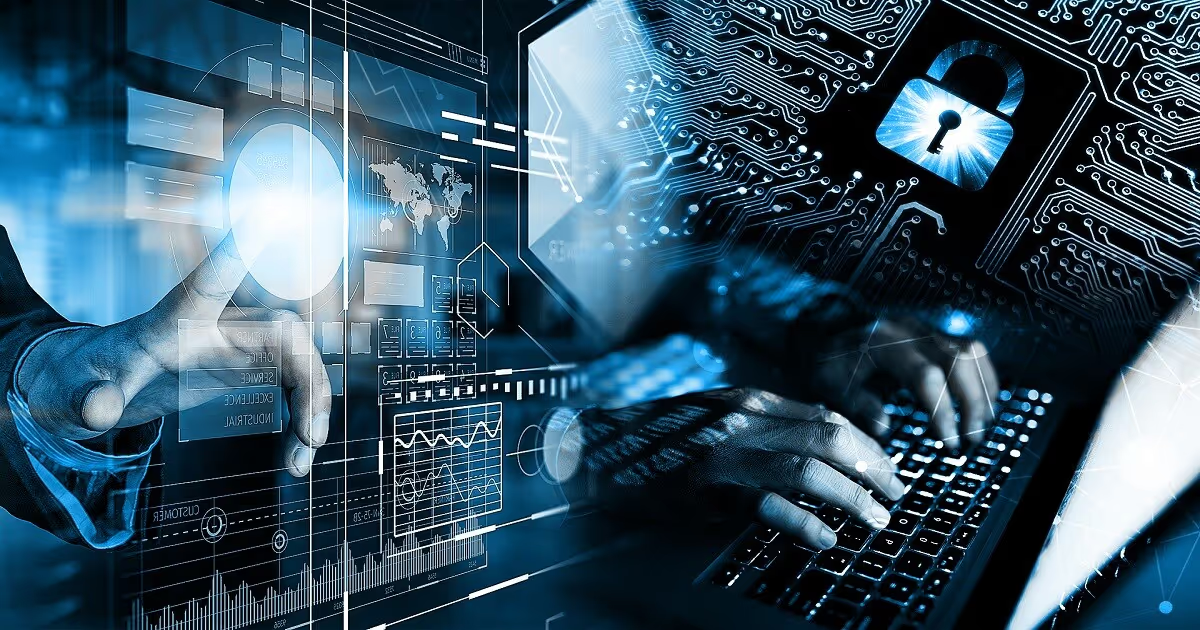Cybersecurity has become a critical priority in today’s hyper-connected world, where online threats evolve faster than ever. From phishing scams to ransomware, the risks are real, and the consequences of a data breach or denial-of-service attack can be devastating. In this blog, we’ll define cyber security, explore common threats, and share practical strategies to protect sensitive information and safeguard your computer systems.
What Is Cybersecurity?
Cybersecurity is about keeping computer systems, networks, and sensitive information safe from security threats. It ensures that data stays private, accurate, and available. As attacks get smarter, security teams need to keep up with the latest defenses.

Common Cyber Threats
1 Data Breaches
A data breach happens when someone gets unauthorized access to important data, like credit card numbers or private business information. These breaches can cause financial loss and hurt a company’s reputation.
2. Denial of Service (DoS) and Distributed Denial of Service (DDoS) Attacks
In a denial of service attack, hackers overload a system or network, stopping it from working. A DDoS attack is even bigger, using multiple systems to launch the attack.
3. Malware
Malicious code like viruses, worms, trojans, ransomware, and spyware can harm systems. They can steal data, damage files, or give hackers access to systems.
4. Insider Threats
Sometimes, threats come from within an organization. Employees or contractors might accidentally or intentionally compromise information security.
5. Phishing Attacks
Phishing tricks people into sharing private information, like passwords or payment details, through fake emails or messages. It’s a common way for hackers to breach network security.
How Hackers Exploit Weaknesses
Hackers often target outdated operating systems or software. Not updating systems can leave them open to attacks. Regular updates and patches are essential to keep systems secure.
Risks of Remote Work
With more people working from home, remote work has become a target for cybercriminals. Home networks are usually less secure than office systems, making it easier for attackers to launch cyber attacks. Employees might also unknowingly expose sensitive information through weak security practices.
Also Read-Crack a Data Science Interview
How to Stay Secure
Here are some tools and practices to protect against security threats:
1. Firewalls and Monitoring Tools
Firewalls block harmful data from entering a network. Monitoring tools alert security teams to unusual activity.
2. Protecting Devices
Use antivirus software and security tools to protect devices like computers and phones from malware.
3. Multi-Factor Authentication (MFA)
MFA adds extra security by requiring more than just a password to log in, like a text message code or fingerprint.
4. Encryption
Encryption turns data into unreadable code so that even if it’s stolen, it can’t be used without a key.
5. Regular Security Checks
Frequent checks and audits can find and fix weaknesses before they are exploited.
Also Read-Data Engineer Roadmap 2025
Types of Malware
Different kinds of malware include:
- Viruses: Attach to files and spread to other programs.
- Worms: Spread across networks on their own.
- Trojans: Look like safe programs but contain harmful code.
- Ransomware: Locks files and demands payment to unlock them.
- Spyware: Secretly tracks what you do to steal information.
Knowing these helps security teams create strong defenses.
Cybersecurity Tips
Follow these tips to improve cybersecurity:
- Keep Software Updated: Always update your systems to fix known weaknesses.
- Train Employees: Teach people to spot phishing scams and follow safety rules.
- Use Strong Passwords: Choose unique passwords and avoid reusing them.
- Limit Access: Only give people access to the information they need for their job.
- Monitor Activity: Use tools to watch for unusual behavior on systems.
- Back Up Data: Save copies of important data so you can recover it if attacked.
The Role of Security Teams
Security teams are crucial for protecting organizations. They:
- Find and fix security risks.
- Watch for malicious code and attacks.
- Act quickly to stop threats.
- Create rules and policies to keep systems safe.
Final Thoughts
When we define cyber security, we go beyond just explaining technical terms—we recognize it as a vital defense in an increasingly digital world. Strong cybersecurity practices are no longer optional; they are essential for protecting data, preserving trust, and ensuring safe online experiences. By staying informed and proactive, individuals and organizations can face the future with confidence.
FAQs: Cybersecurity
What is a data breach, and how can it be prevented?
A data breach is when someone accesses sensitive information without permission. Prevent it by using encryption, limiting access, and conducting regular security checks.
What are the types of denial of service attacks?
Denial of service attacks can flood networks with traffic, target specific protocols, or focus on applications. Each type disrupts services differently.
What are the basics of network security?
Network security includes firewalls, encryption, and access controls to stop unauthorized access to systems and data.
How does malware spread?
Malware spreads through email attachments, bad downloads, or infected websites. It can also move via USB drives.
Why is cybersecurity important for remote work?
Remote work increases security risks because home networks are less secure. Tools like VPNs and antivirus software can help protect remote workers.


.avif)





